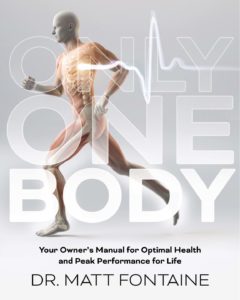15 Mar Could Inflammation Be a Major Cause of Heart Disease?
A recent article by Janet P. Wallace, Ph.D., FACSM, and Blair Johnson, M.S. published in the American College of Sports Medicine Certified News July-September 2010, Volume 20:3 discussed New Thoughts on What Reallly Causes Heart Disease and How Exercise Helps Beyond Traditional Factors. They opened the article citing a question “how many times have you heard that only 50% of the patients who have a cardiac event have elevated cholesterol or that only 50% of people with elevated cholesterol develop heart disease?” Key Points the authors make in the article are:
- endothelium, the single most inner layer of the artery is the site or origin for atherosclerosis development.
- endothelial production of nitric oxide(NO) is how the endothelium protects the artery from atherosclerosis.
- NO controls antiatherogenic activities of platelet aggragation, coagulation, adhesion, fibrinolysis, and vascular tone in the artery.
- The synthesized of NO from L-arginine, oxygen, and elctrons carried by nicotinamide dinucleotide phosphate(NADPH) is catalyzed by endothelial nitric oxide synthetase(eNOS) and dependent on other cofactors.
- eNOS can be stimulated by shear stress from arterial blood flow, insulin, and acetylcholine.
- Insulin’s stimulation of eNOS and subsequent NO production is dependent on insulin sensitivity, which could be a mechanism of why diabetics and those with insulin resistance are at higher risk of cardiovascular diseases.
The remainder of the article goes on to explain how superoxide radicals(O2-) can accumulate as a result of excess oxidative stress. NO is used up as a scavenger of free radicals like O2-. They also state that a high fat meal has been linked with increased oxidative stress, as is a high sugar meal in diabetics. As far back as 1979, postprandial lipemia(fat in blood after meal) has been linked to atherosclerotic cardiovascular disease. When the cells use the fat’s oxidative stress, endothelial injury results. The resources below cite articles on studies that have shown exercise can increase insulin sensitivity, decrease postprandial lipemia, increase NO2 and increase antioxidant defense. Changes in insulin sensitivity vanish within 3-5 days after a single exercise session, so it is necessary to be regular with your exercise.
References: References
1. Eriksson, J., S. Taimela, et al. (1997). “Exercise and the metabolic syndrome.” Diabetologia 40: 125-135.
2. Maeda, S., T. Miyauchi, et al. (2001). “Effects of training of 8 weeks and detraining on plasma levels of endothelium-derived factors, endothelin-1, and nitric oxide, in yount healthy humans.” Life Sciences 69: 1005-1016.
3. Padilla, J., R. A. Harris, et al. (2006). “The effect of acute exercise on endothelial function following a high-fat meal.” European Journal of Applied Physiology 98: 256-262.
4. Patsch, W., H. Esterbauer, et al. (2000). “Postprandial lipemia and coronary risk.” Current Atherosclerosis Reports 2: 232-242.
5. Petitt, D. S. and K. J. Cureton (2003). “Effects of prior exercise on postprandial lipemia: A quatitative review.” Metabolism 52: 418-424.
6. Sies, H., W. Stahl, et al. (2005). “Nutritional, dietary and postprandial oxidative stress.” Journal of Nutrition 135: 969-972.
7. Vogel, R. A., M. C. Corretti, et al. (1997). “Effect of a single high-fat meal on endothelial function in healthy subjects.” American Journal of Cardiology 79: 350-354.
8. Vollard, N. J. B., J. P. Shearman, et al. (2005). “Exercise-induced oxidative stress: Myths, realities and physiological relevance.” Sports Medicine 35: 1045-1062.
9. Wallace, J. P., B. D. Johnson, et al. (2010). “Postprandial lipemia, oxidative stress, and endothelial function: A review.” International Journal of Clinical Practice 64: 398-403. 10. Wheatcroft, S. B., I. L. Williams, et al. (2003). “Pathophysiological implications of insulin resistance on vascular endothelial function.” Diabetic Medicine 20: 255-268.




